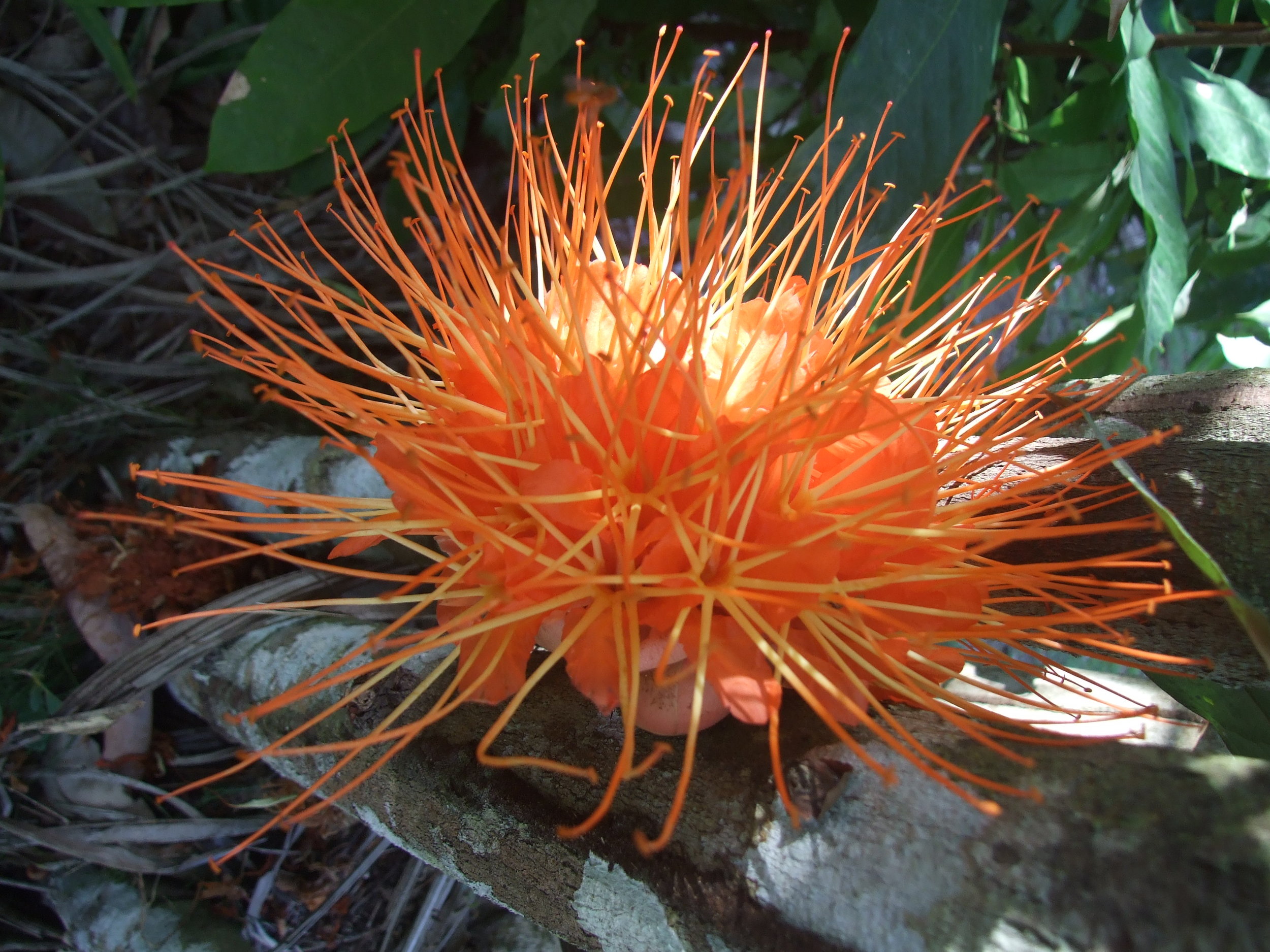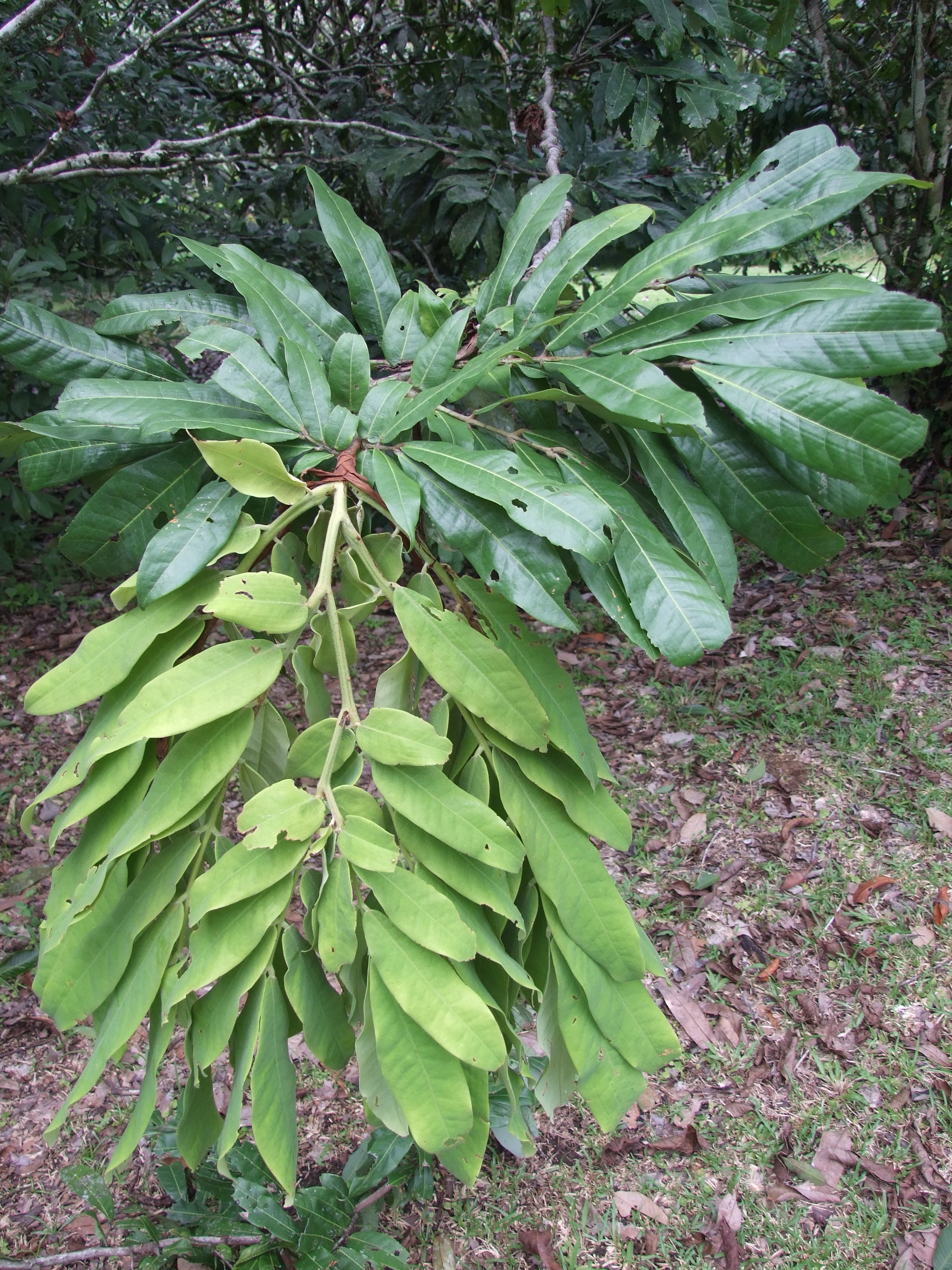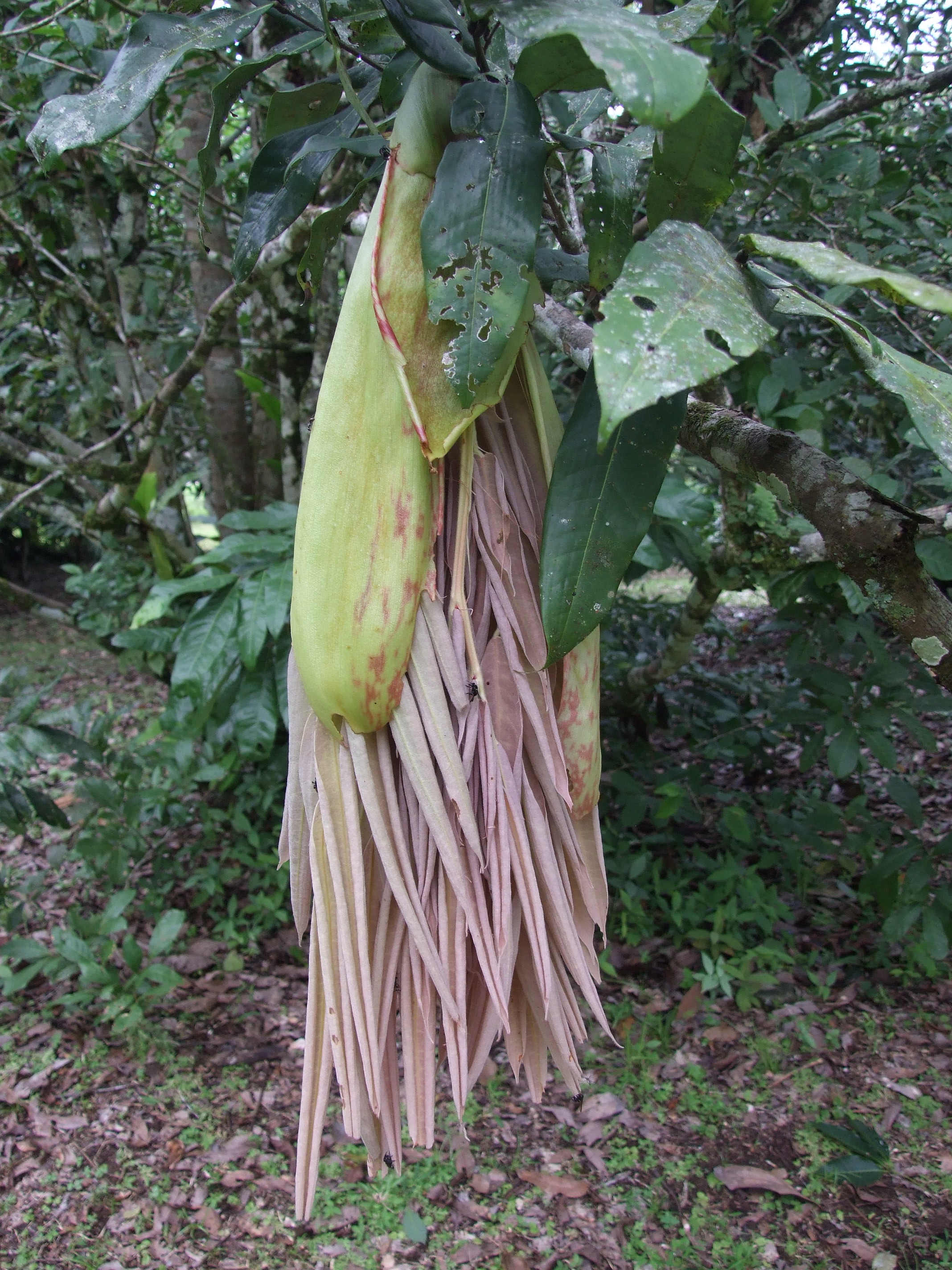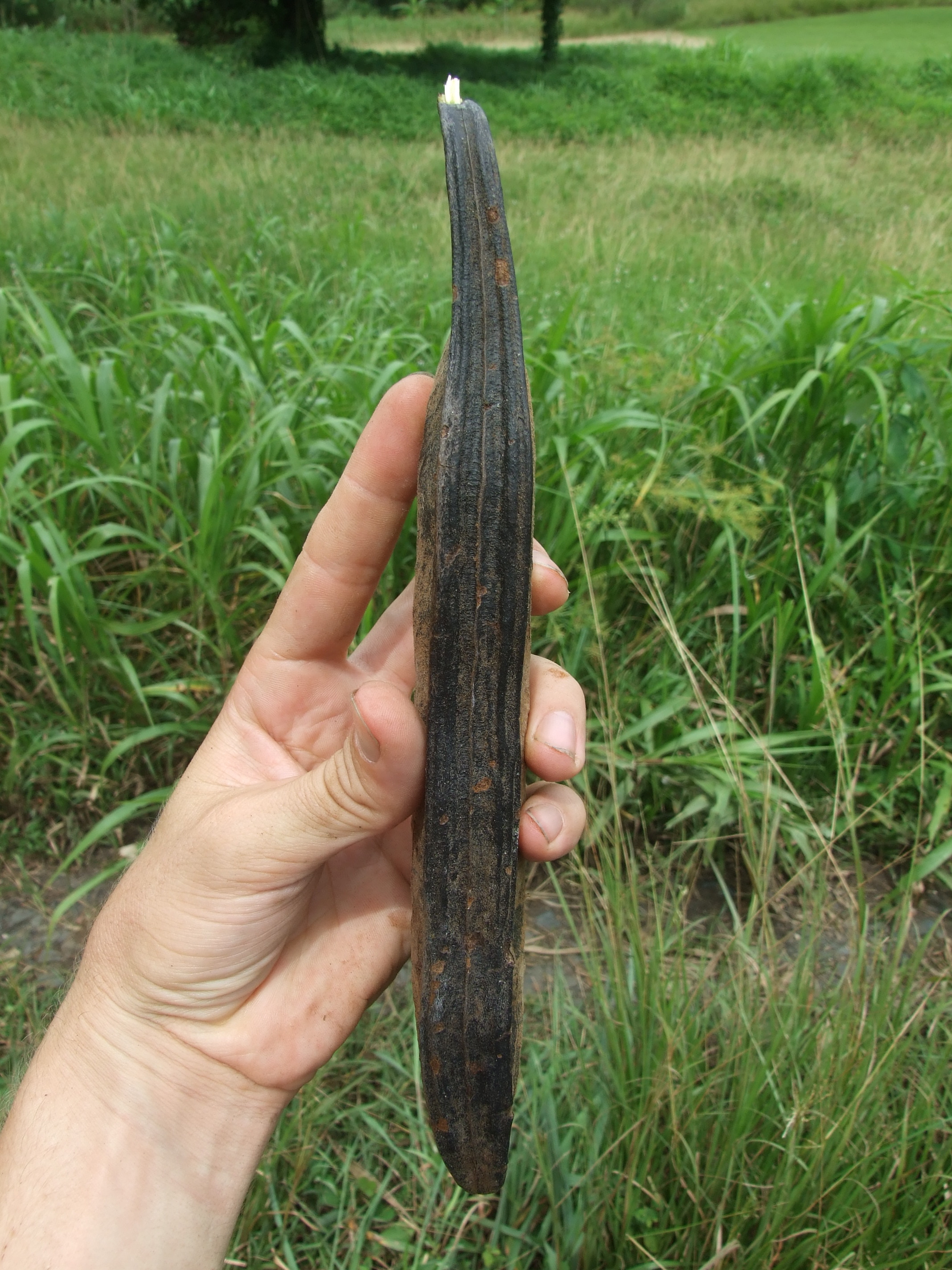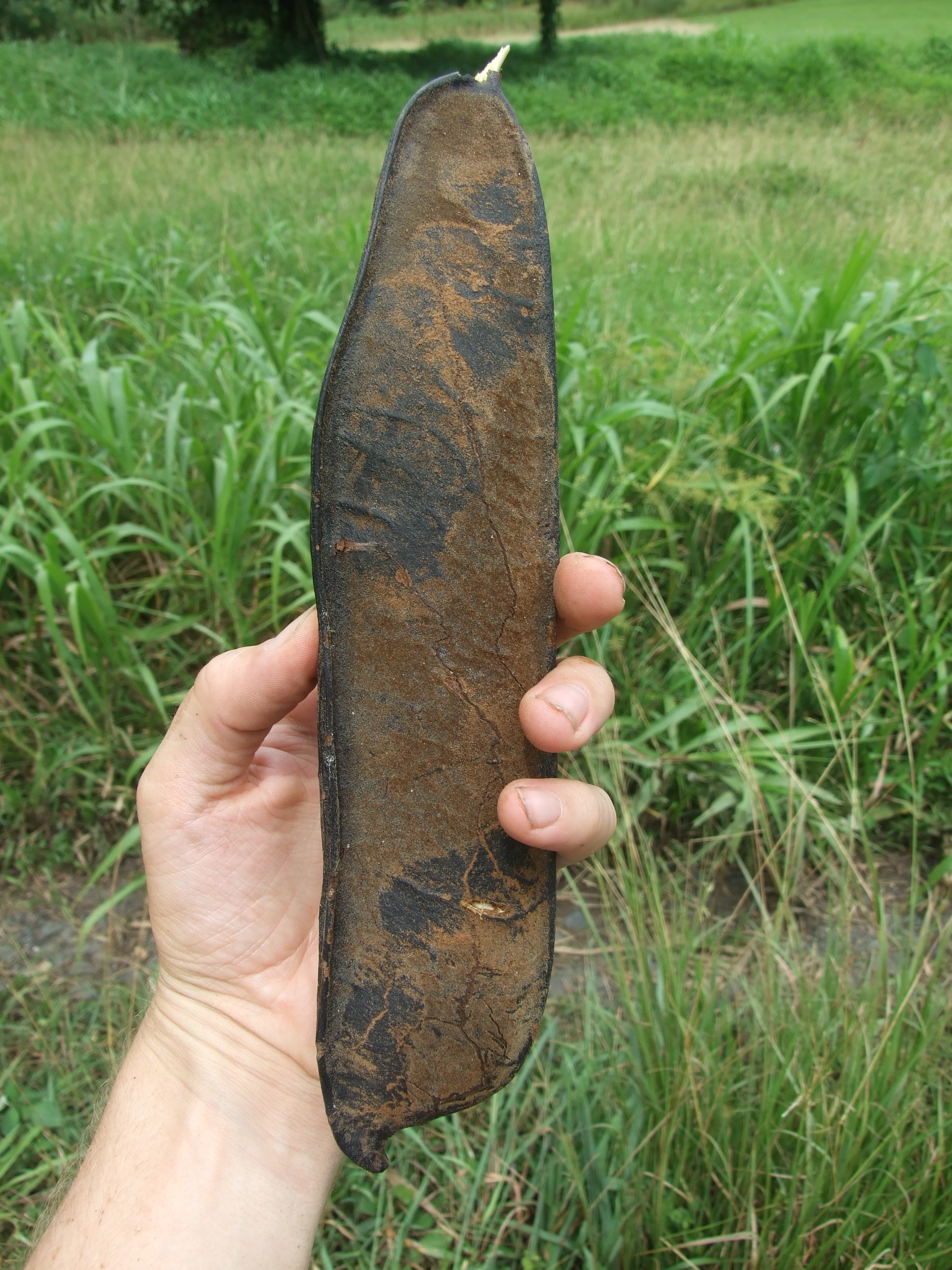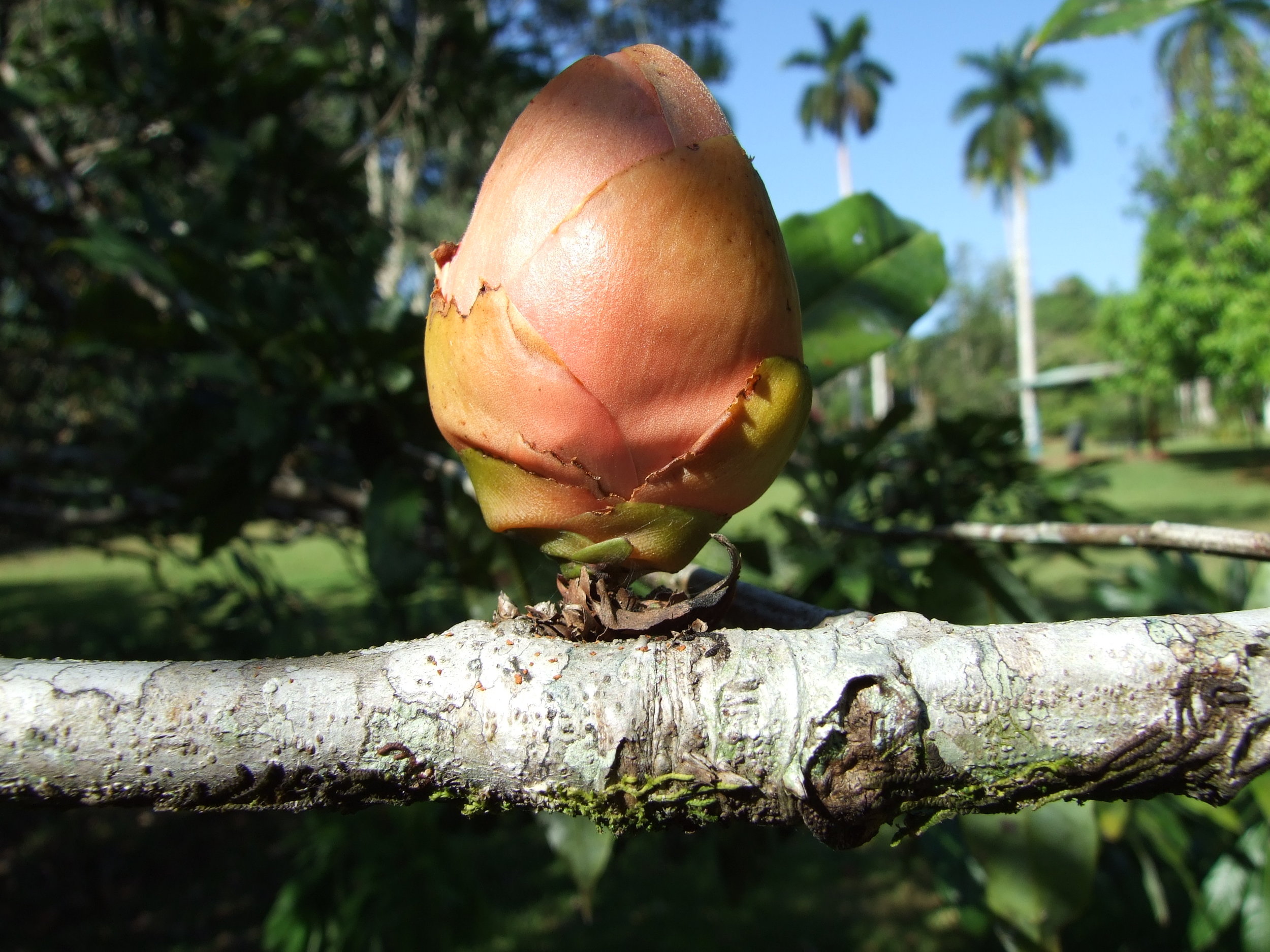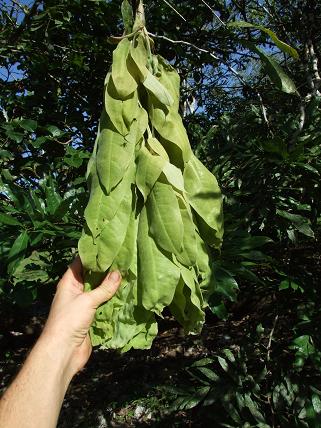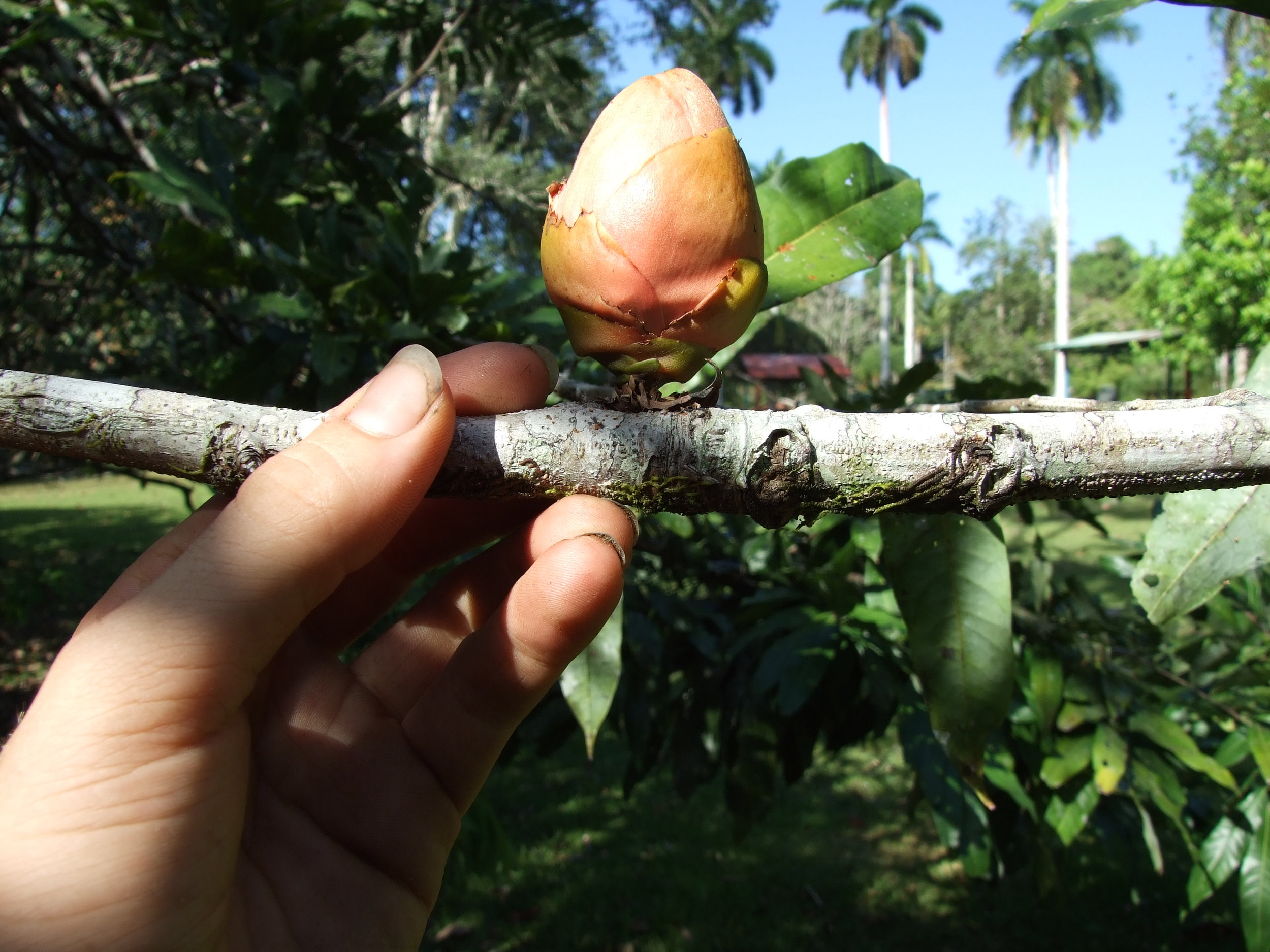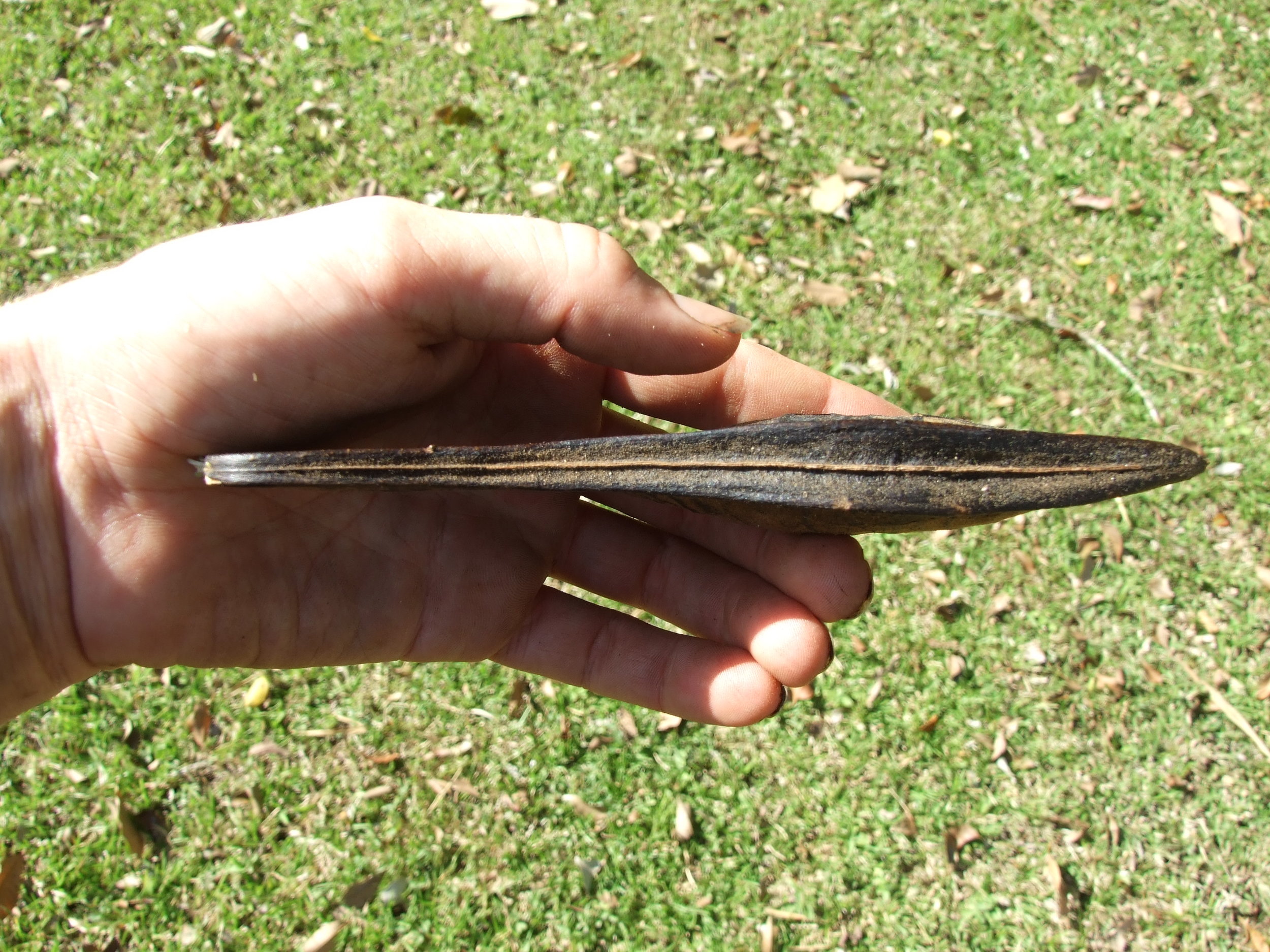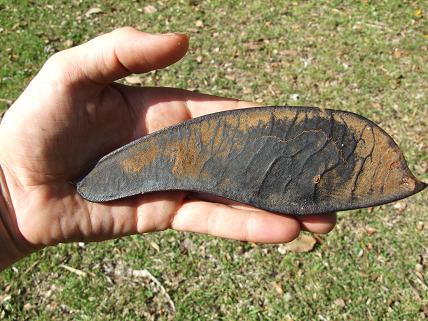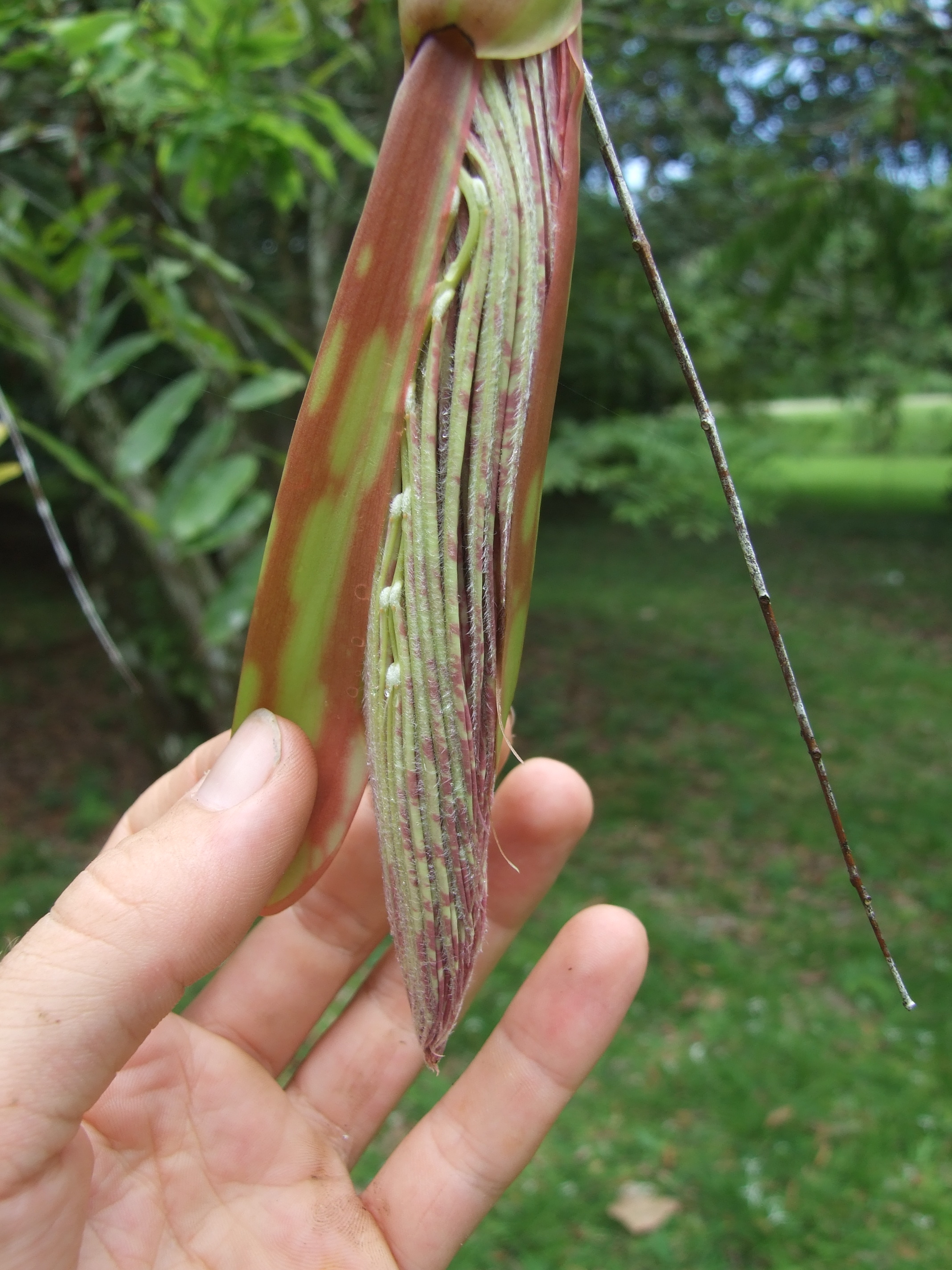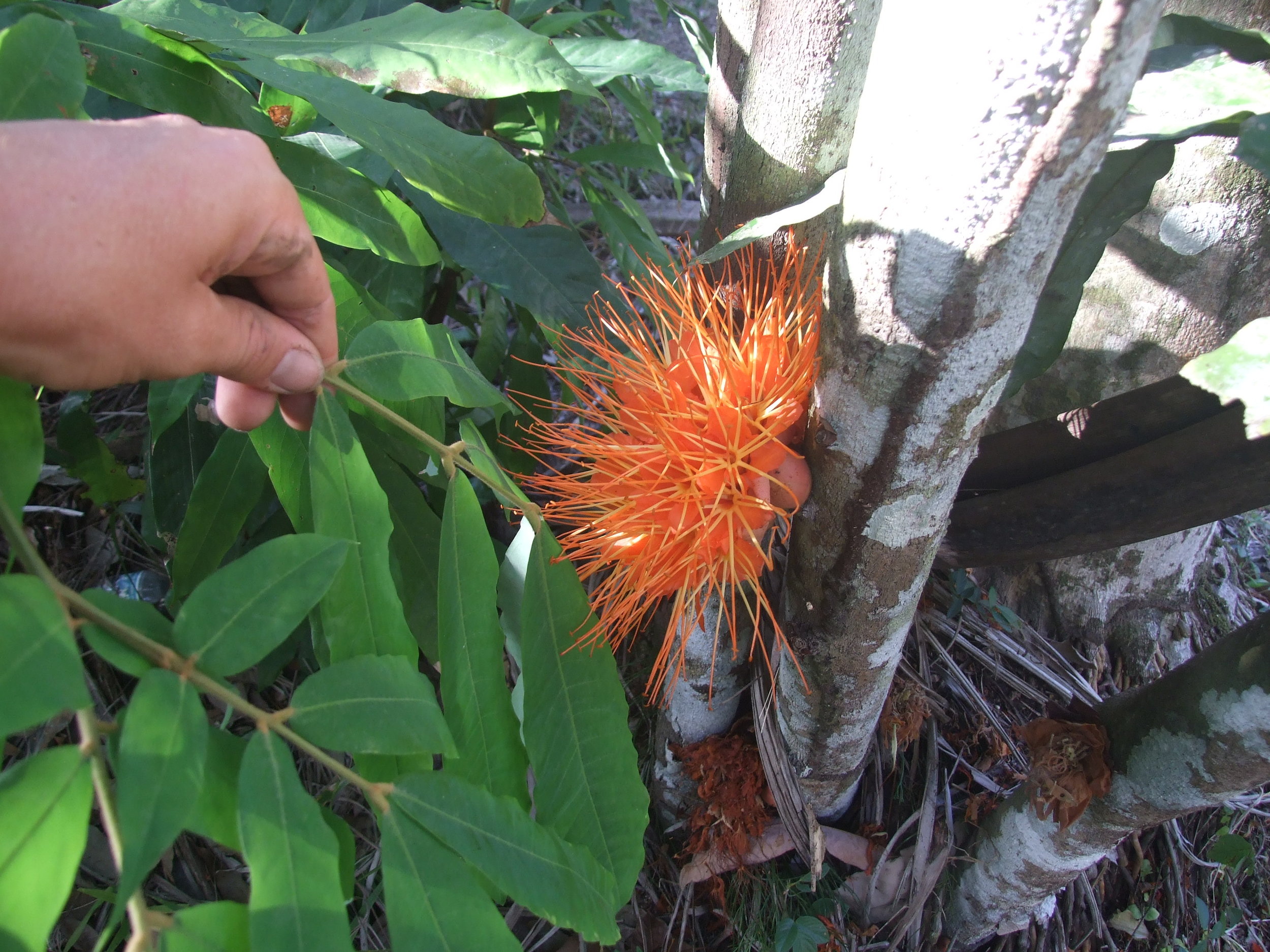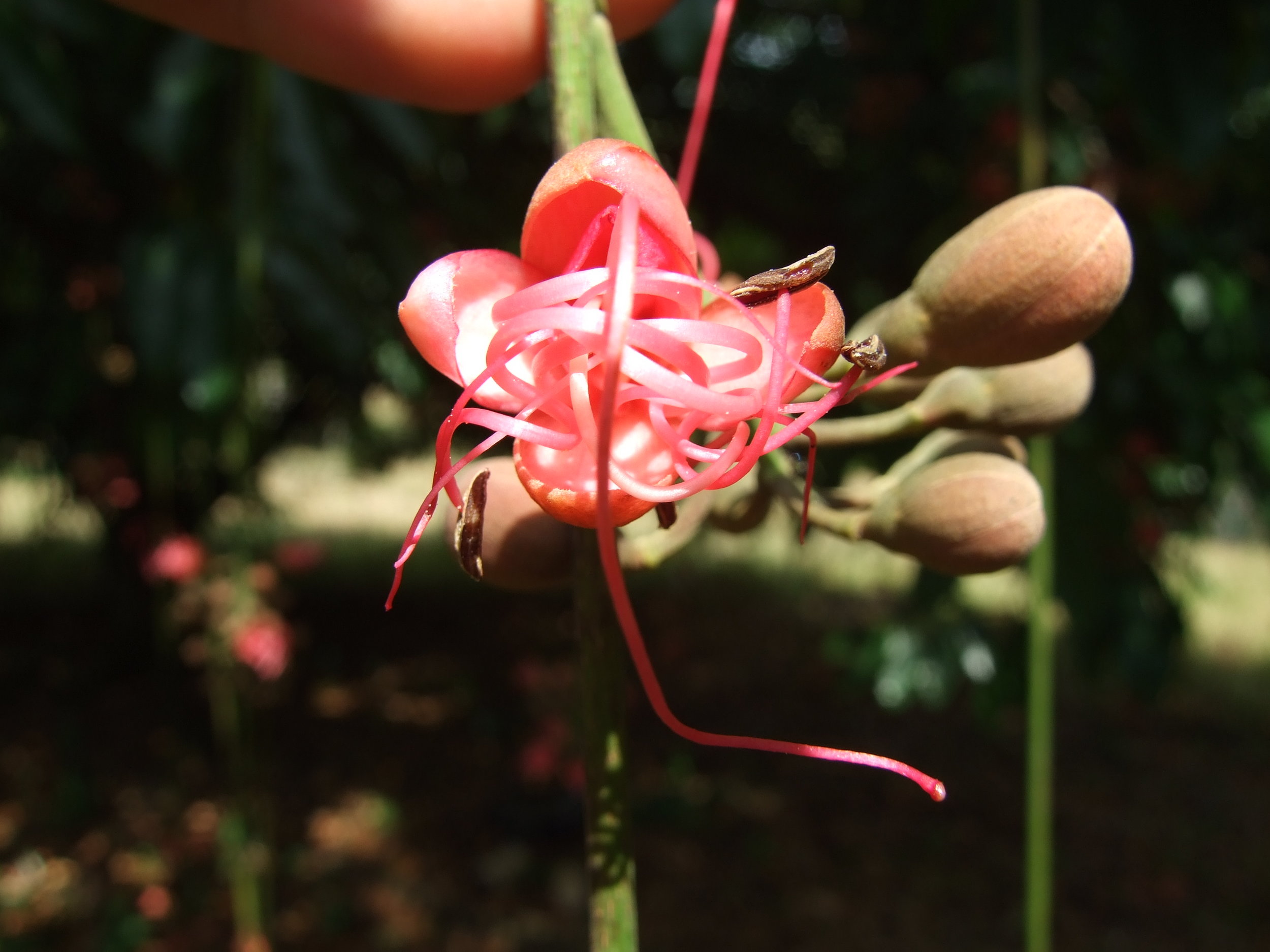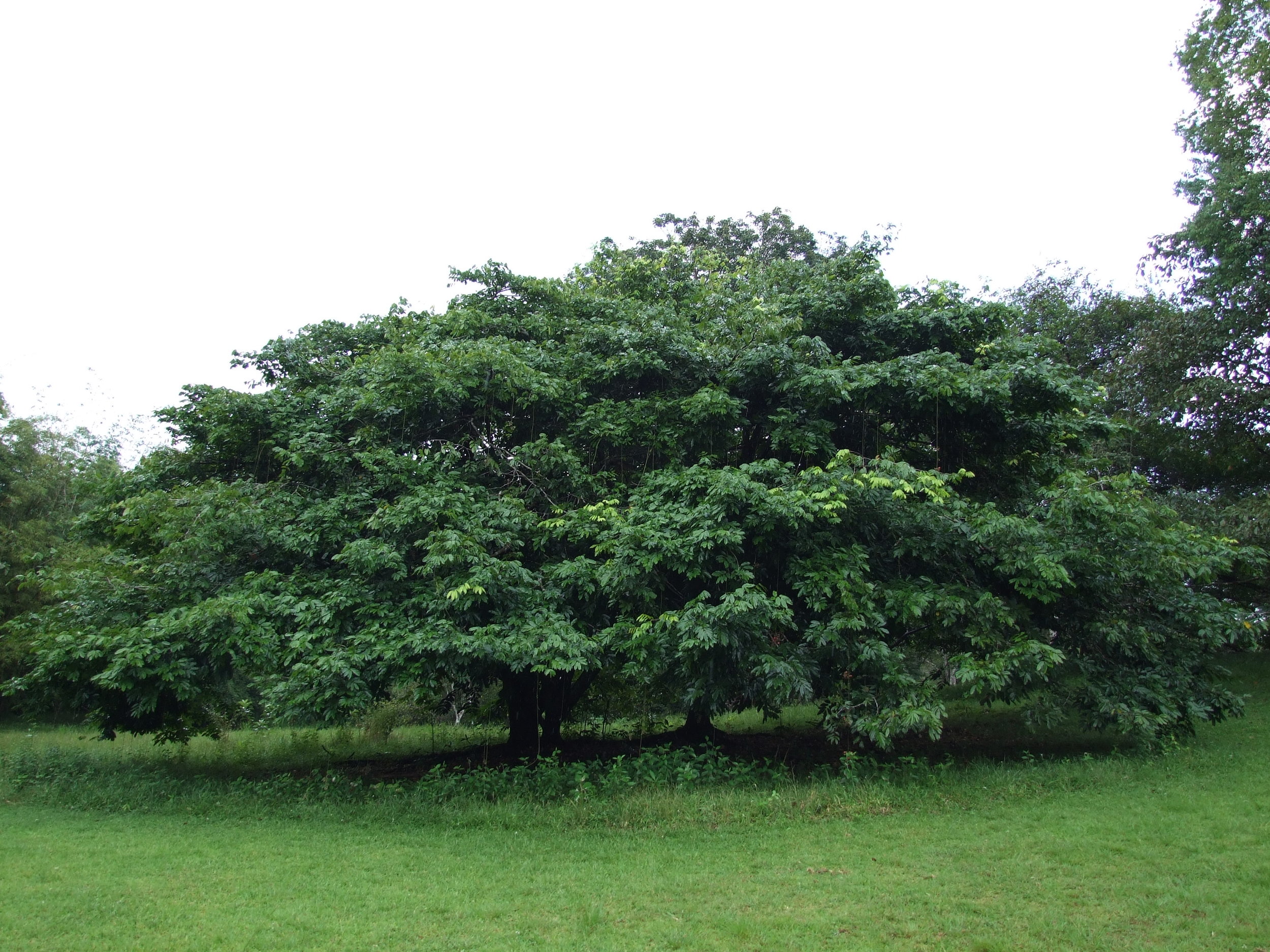BACKGROUND
Endemic to the humid, lowland forests of Guyana, northern S America, E. falcata remains largely unknown outside its place of origin. The tree can make a giant, robust forest tree, with a massive spreading canopy. Flower clusters dangle at the end of long, pendant stems, which hang down in abundance, forming a fringe below the canopy. Each inflorescence forms a fairly incredible, deep mauve-pink, woody pod containing a single seed. The pod is reminiscent in shape to a machete blade, or even more accurately, a scimitar. The pods explode upon opening, flinging their seed up to 100 feet.
USES AND ETHNOBOTANY
The resin may have slight bactericidal and antifungal properties, which account for its use as a cicatrizant (a substance that heals by inducing scarring). The resin from the bark is placed on warm leaves and tied around cuts and sores, ulcers etc as a poultice. The resin is used as a cicatrizant to heal wounds. The bark is decocted as a dental analgesic. The bitter bark is used as an emetic.
The wood yields an oil which is used as an ointment for rheumatism and to treat wounds[


